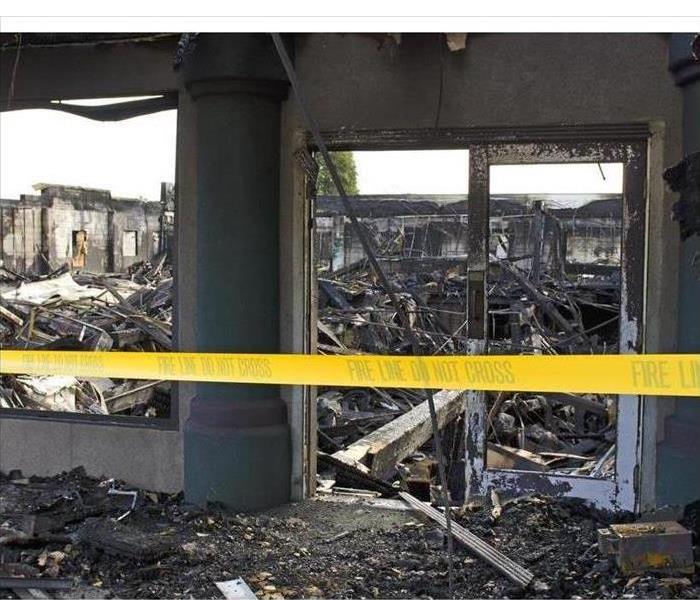3 Kinds of Hidden Damage to Watch For After a Partial-Loss Fire
8/20/2022 (Permalink)
After a Fire with Partial Loss, There Are 3 Types of Hidden Damage to Look Out For
Any type of fire loss can cause a major disruption to your Campbell, CA, business. However, things can get particularly complicated in the event of a partial loss. In the insurance world, the term partial loss refers to a situation where a fire occurs but does not destroy the entire building. A partial loss fire often causes unseen damage, which results in insufficient insurance claims and, consequently, inadequate fire restoration work. Be wary of these three commonly overlooked sources of hidden property damage after a partial loss fire.
1. Smoke Damage
Where there's fire, there's smoke and in a business fire, smoke, soot, and ash usually spread much farther than the flames themselves. In most cases, nearly every interior surface will need to be cleaned and deodorized to eliminate soot stains and smoke odors. This type of cleanup should only be done by a professional remediation company, using specialized cleaning agents and techniques. Some items may be too damaged to restore and will need to be replaced. Porous surfaces, such as carpet and upholstery, are at a higher risk of total loss from soot and smoke damage.
2. Water Damage
A common side effect of fire loss is water damage, usually caused by the high pressure and large volume of water used to put out the fire. Mold growth often begins within the first 24 hours after a fire and can spread through the building's air ducts to areas beyond the fire-damaged zone. Unchecked mold growth can cause serious property damage to your building. A certified industrial hygienist should conduct a full mold inspection after any fire.
3. Heat Damage
The intense heat produced by a fire can cause significant damage to your building. At extreme temperatures, the glass may warp, and window or door frames may blister or melt. Iron or steel can transfer heat to other areas, causing structural instability. An engineer's inspection is often the best way to detect this damage.
A fire loss doesn't have to destroy your entire building to cause widespread property damage. Checking for these damage sources will ensure that your insurance claim and restoration measures are adequate.






 24/7 Emergency Service
24/7 Emergency Service
